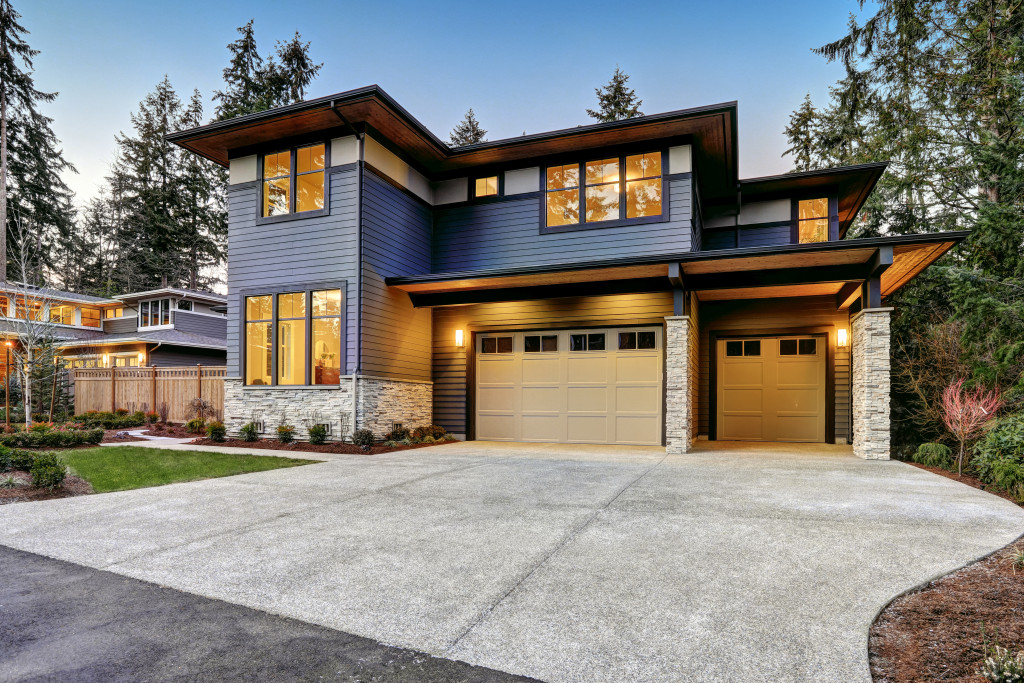Your landscape can make or break the overall curb appeal of your home. Observe the houses around your neighborhood. Those that stand out probably have a glorious landscape filled with the freshest and colorful ornaments, while some stand out for a different reason — an unkempt or outdated landscape. Even if you can’t identify all the plants at the garden center, knowing the basics of good landscaping is the key to an eye-catching front yard.
According to landscape economist John Harris, good landscaping adds 28% to the overall house value and cuts time on the market by 10% to 15%. This is very useful for those planning to sell their home and want to get the best value for their property. If you want to make a great first impression on your potential home buyers, then it makes sense to create a stunning landscape.
In fact, some homeowners are going the extra mile by hiring landscape designers, reticulation system contractors, and general bed maintenance. These services take the chore out of your landscape maintenance to make your lawn and plants in great shape.
Meanwhile, some homeowners take the matters into their own hands by doing the landscaping themselves. Although landscaping design mistakes are very common, it’s important to do it right from the start to save money and energy. Here are some of the biggest blunders in home landscaping and how to avoid them.
Wrong planning
The idea of doing your own landscaping can fill you with extreme excitement and eagerness. But like any other home improvement, it’s necessary to have a concrete plan in place. The last thing you want is to spend more and overstuff your yard with unnecessary ornaments and plants.
Before you dive right into digging and planting, plan the look and theme of your landscape and sketch it. You can also seek the help of a landscape designer to pick the best plants and ornaments that go well for your yard and avoid running into problems related to colors, flow, design, and space.
Overstuffing with ornaments
The beauty of a landscape lies not only in the number of ornaments, but it should also be easy on the eyes. Having free rein on your landscape design doesn’t mean you can replicate all the landscape inspirations from Pinterest. While we all want to have a yard that is admired and noticed, it’s better to stick with a design that’s classy and tasteful. Putting up a lavish display can make your yard look stuffy and unkempt.
When it comes to landscaping, the less is more beautiful, while too much is wasteful and excessive. A great tip is to apply everything in moderation, especially with the shrubs and flowers. While ornaments are great in making bold statements, combining them with random objects will defeat their purpose. To avoid ornament stuffing, it is best to add just a couple of feature pieces for a more defined impression.
Before buying statement pieces, think about their concept and the place you’re planning to put them. The statement piece should match the garden’s overall style instead of placing them with no purpose. Your goal is not to make your garden looking like a living room. Celebrate simplicity by combining a few dramatic pieces and indoor furnishings.
Applying the same colors

While evergreens look nice and relaxing, it doesn’t mean you have to cover the whole yard with the color green. Planting too much of the same thing can make a garden look boring and redundant. Remember that planting the same plant several times sucks out certain nutrients from the soil. While green plants give off a refreshing look, a monochrome landscape can ruin the curb appeal of your landscape. If you’re planning to give your landscape a new look, it’s important to focus on adding more variety.
A balanced landscape design takes color, texture, and size into account and attempts to keep elements and maintain scale in equal proportion. When planting, it’s better to combine various sizes and shapes to form visual interest and make it look exciting.
For example, add texture and variation by adding perennial plants that bloom in various seasons to give the yard different pops of color. You can also pick a color palette that will serve as the main theme and add plants around your preferred color choice. As much as possible, keep it simple and clean to bring a sense of unity to the overall design.
Landscaping projects are a complex home improvement that requires the right knowledge and skill set. But for those who want to put their DIY skills to the test, it’s important to map out a plan to avoid the mistakes mentioned above. Educating yourself with the best landscaping practices is the key to get you through the entire process. If all else fails, contact a professional landscape company to do the work for you.
